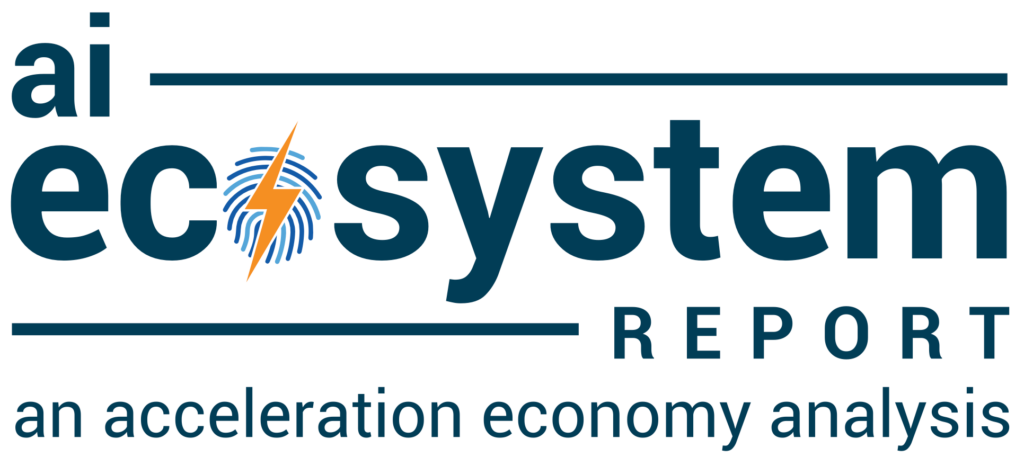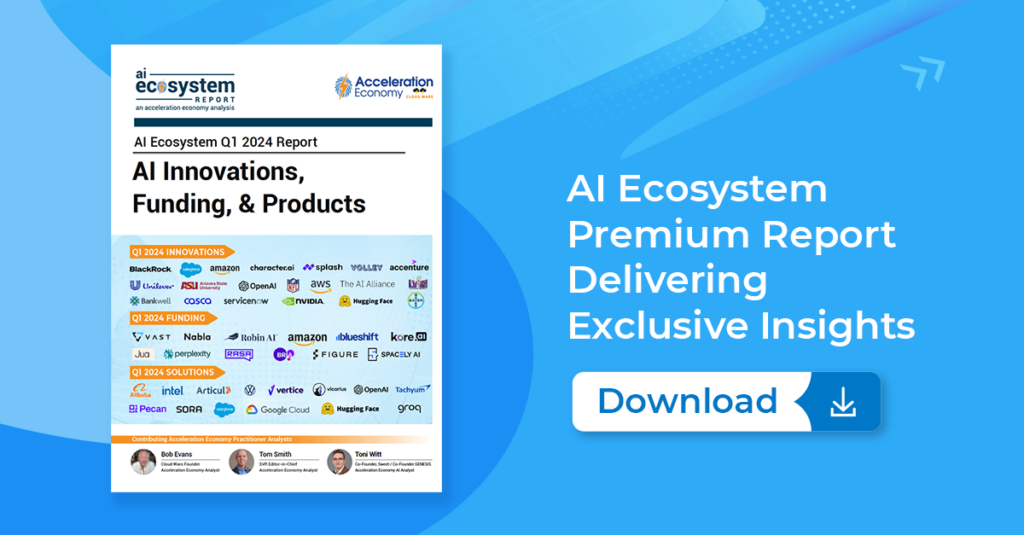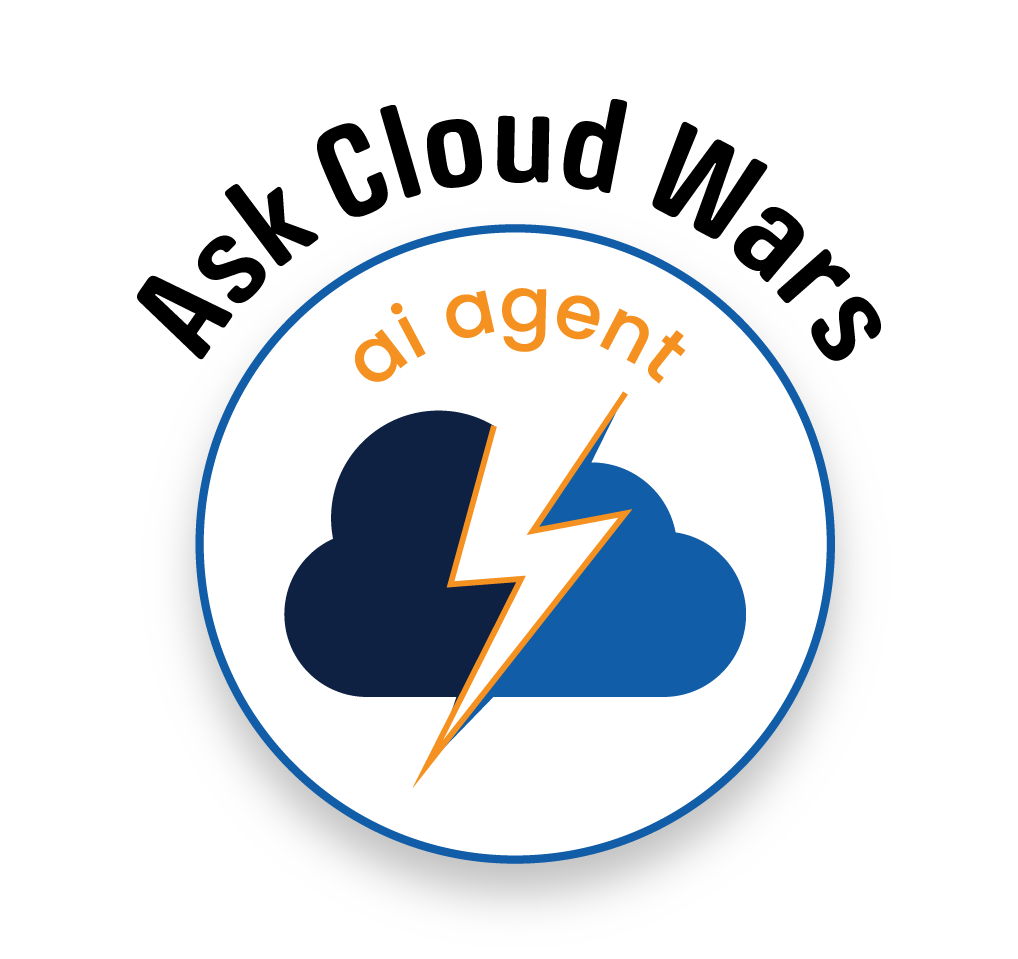
At Acceleration Economy, we have been chronicling the value business and technology leaders generate by applying AI. The benefits have been primarily on operational workflow efficiency, data processing power and speed, and automation of tedious and time-consuming tasks.
Data validates the benefits. McKinsey’s research reveals that GenAI is a significant economic booster, with annual profit contributions projected to reach $4.4 trillion. Nearly three-quarters of this value is derived from customer operations, marketing and sales, software engineering, and research and development. These early productivity gains and future projections are impressive.
But now, pressure is mounting to ensure that AI investments go beyond operational excellence to deliver revenue. According to Gartner, global expenditures on AI are projected to reach a staggering $297 billion by 2027. This figure points to the widespread recognition of AI’s potential to generate revenue for companies and the broader economy.
Let’s explore the use cases, market segments, and companies that are using AI to produce revenue.
Daily GenAI Launches Generate Millions for Businesses
According to a Bloomberg Intelligence report, GenAI products are on track to generate $280 billion in new software revenue. Most of the GenAI revenue today is driven by online assistants, new data and infrastructure products, and copilots that accelerate coding. The Cloud Wars Top 10 and AI Ecosystem Top 12, including Amazon Web Services, Microsoft, Google, and NVIDIA, are out in front here. However, GenAI revenue is rapidly increasing in diverse software applications, including content marketing, cybersecurity, fraud prevention, business intelligence, and analytics.
Sales Opportunity Analysis to Identify Revenue Opportunities
AI is making a significant impact in helping companies analyze their best revenue and sales opportunities. Organizations leverage AI and machine learning to process sales conversations that humans often overlook. These conversations hold valuable insights that identify and prioritize revenue opportunities. The more sellers understand their customers, the better they can connect with them, serve them in meaningful ways, and gain a competitive edge. This is essential in today’s business landscape, where engaging with prospects and customers is becoming increasingly challenging due to changes in their research and decision-making processes. Companies like Salesforce, Zoom, Gong, and 6Sense are prime examples of how AI is being harnessed in the sales journey to drive revenue.

The AI Ecosystem Q1 2024 Report compiles the innovations, funding, and products highlighted in AI Ecosystem Reports from the first quarter of 2024. Download now for perspectives on the companies, investments, innovations, and solutions shaping the future of AI.
Market Analysis and Demand Forecasting to Optimize Revenue
Organizations can apply AI tools to adapt pricing and forecast demand based on market conditions and customer behaviors. For example, home building, construction, and real estate companies that rely on real-time market data, materials cost tracking, and consumer intelligence invest in AI to gain a better understanding of demand, market shifts, and revenue opportunities. AtlasRTX, Eliant, and OpenHouse AI are a few examples of companies driving revenue from AI-powered offerings that help business leaders navigate dynamic markets using real-time intelligence.
AI Intelligence for Supply Chain and Customer Value Optimization
ERP, supply chain, customer service, and procurement applications are now integrating AI models and capabilities. Using AI-powered analysis and monitoring, businesses optimize inventories, source materials, predict requirements, and personalize customer communications to bolster customer and partner revenue. This is accelerating with the adoption of partners ecosystems to help all stakeholders across the supply chain benefit in terms of speed, income, and profits. SAP, ServiceNow, and IBM generate millions of dollars in new sales from these AI products and solutions serving supply chain juggernauts such as Unilever, Coca-Cola Company, Shell, Pfizer, and Dell.
Consumer Preferences Reveal Revenue Opportunities
By using AI to understand changing customer sentiments and expectations, businesses can generate new and expanded revenue streams. Deep data analysis guides companies on what, how, and when to offer products to customers. The most significant customer applications to drive and protect revenue are focused on predictive behavior analysis, personalized messaging and experiences, and monitoring customer sentiment to increase customer loyalty and prevent churn. In addition to the major cloud tech providers noted previously, specialty AI solutions from Insight7, Dragonfly, GreenDeck, and Persado are delivering AI products and benefiting from new revenue.

Final Thoughts
AI revenue is emerging and expanding beyond operational benefits. We are beginning to see the revenue materialize for all the AI, machine learning, and natural language processing development that has occurred over the last decade and accelerated over the past three years. Customer and investor expectations are off the charts. At this stage, all signs point to healthy revenue growth as enterprises pour resources into AI applications and move their businesses, data, and software to the cloud.
Ask Cloud Wars AI Agent about this analysis










